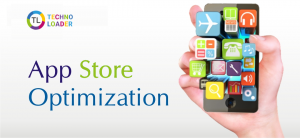n the ever-evolving world of digital marketing, staying up-to-date with the latest trends is not just a choice; it's a necessity. As technology continues to reshape the way businesses connect with their audience, it's crucial to adapt and leverage these trends to ensure your marketing strategies remain effective and competitive. In this comprehensive guide, we delve into the most impactful digital marketing trends of 2023 that are reshaping the landscape and offer actionable insights on how your business can harness their power.
1. AI-Powered Personalization: Elevating Customer Experiences
Artificial Intelligence (AI) has transcended its role as a mere buzzword to become a pivotal tool in crafting personalized customer experiences. The ability to analyze vast amounts of data enables businesses to tailor their marketing efforts based on user preferences, behaviors, and demographics. Through AI-driven algorithms, brands can deliver hyper-targeted content, product recommendations, and even anticipate customer needs, resulting in improved customer satisfaction and higher conversion rates.
2. Voice Search Optimization: Conversations Redefined
With the rise of voice-activated devices like smart speakers and virtual assistants, voice search optimization has become paramount. People are increasingly using voice commands to search for information, products, and services. To thrive in this environment, adopting a conversational tone in content, optimizing for long-tail keywords, and providing succinct, informative answers are essential strategies. Voice search is reshaping SEO dynamics, and businesses that adapt will have a competitive edge.
3. Video Domination: Captivating Visual Storytelling
Video content continues to reign supreme in the digital realm. Its immersive nature captures attention and delivers messages effectively. Short-form videos, live streams, and interactive videos are garnering massive engagement across platforms. To leverage this trend, create compelling video content that tells your brand story, showcases products, and provides value to your audience. The viral potential of videos can significantly boost brand visibility and engagement.
4. Ephemeral Content: Embracing the FOMO Culture
Ephemeral content, characterized by its temporary nature on platforms like Instagram Stories and Snapchat, taps into the Fear Of Missing Out (FOMO) culture. It creates a sense of urgency and exclusivity, compelling users to engage immediately. Brands can leverage this trend by offering limited-time promotions, behind-the-scenes glimpses, and sneak peeks into upcoming launches, fostering a deeper connection with their audience.
5. Sustainable and Purpose-Driven Marketing: Connecting with Values
In an era where consumers are increasingly conscious of their impact on the environment and society, sustainable and purpose-driven marketing is gaining traction. Aligning your brand with meaningful causes, showcasing eco-friendly practices, and transparently communicating your values can resonate deeply with customers. Brands that authentically contribute to a better world are not only earning loyalty but also making a positive impact.
6. Augmented Reality (AR) Integration: Interactive Experiences
Augmented Reality is transforming the way consumers interact with brands, allowing them to virtually experience products before making a purchase. From trying on clothes through AR mirrors to visualizing furniture in their homes, customers are more engaged than ever. Integrate AR experiences into your marketing strategies to enhance user engagement and build excitement around your products or services.
7. Content Clusters and Topic Authority: SEO Evolution
Search Engine Optimization (SEO) has evolved beyond traditional keyword stuffing. Content clusters, where a pillar piece of content is supported by related subtopics, are gaining prominence. This approach not only establishes your website as an authoritative source on a particular topic but also improves search visibility and user experience. Crafting in-depth, comprehensive content is essential for climbing search engine rankings.
8. Social Commerce: Seamless Shopping on Social Media
The line between social media and e-commerce continues to blur with the rise of social commerce. Platforms like Instagram and Facebook are integrating shopping features that enable users to make purchases without leaving the app. To capitalize on this trend, curate an appealing social commerce strategy, showcase products creatively, and make the purchasing process seamless, thereby tapping into the vast social media user base.
9. Data Privacy and Trust: Building Customer Confidence
As data breaches and privacy concerns make headlines, consumers are more cautious about sharing their information online. Ensuring robust data protection measures and transparent data usage policies are critical. Brands that prioritize data privacy not only build trust with their audience but also comply with regulations. Prioritizing security can be a unique selling point in today's digital landscape.
10. Micro-Moments: Seizing Quick Decision Opportunities
Micro-moments refer to those instances when users turn to their devices to quickly fulfill a need – be it information, entertainment, or shopping. Brands that can deliver relevant, concise, and easily accessible content during these micro-moments can capture attention and influence quick decisions. Optimizing for mobile search and providing immediate value are keys to succeeding in these crucial moments.
In conclusion, staying ahead in the ever-changing digital marketing landscape requires embracing these trends and leveraging their power. From AI-driven personalization to embracing sustainable values, each trend offers a unique opportunity to connect with your audience and drive business growth. By adopting a proactive approach to these trends, your brand can not only stay relevant but also thrive in the dynamic world of digital marketing.






